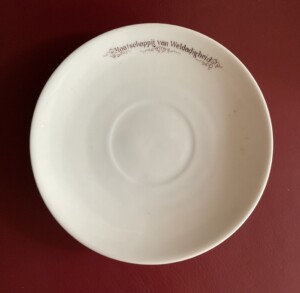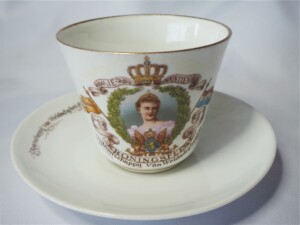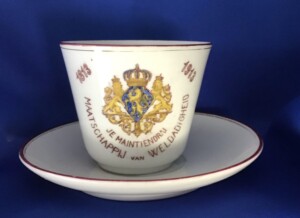
After the war with Napoleon in the early 1800s, there was a lot of poverty in the Netherlands.
General Johannes van der Bosch wanted to do something about this. With the permission of King William Ist, he founded the Society of Benevolence.
The richer people in our country could contribute a penny a week to the re-education of the poor population.
The general wanted to bring the poor from the cities to the countryside to cultivate the land there and learn the trade of farming. With discipline and discipline he would raise them to be independent. His Society gained 20,000 members – a hugely successful crowdfunding campaign.
He first built his ‘free colonies’ near Steenwijk: Frederiksoord, Willemsoord and Wilhelminaoord. There the poor families were given a small farm. They lived there under supervision.
Subsequently, asylums were established that could house 2,000 people. But people didn’t want to just leave their cities. He convinced the king that orphans were much better off in the fresh air of Veenhuizen than in the cities – and cheaper too. A law was passed that sent all ‘city dwellers’ over the age of six from all over the country to Veenhuizen.
An estimated 100,000 people have undergone such re-education in one of the seven Colonies of Benevolence.
In our collection we have two cups and saucers with the text, Society of Benevolence. One made for the inauguration of Queen Wilhelmina in 1898 and one from 1913 for 100 years of Dutch Independence.
The following information was sent to us from the curator of Museum de Proefkolonie Frederiksoord Mr.A.Geerts, for which we are very grateful:
The National Prison Museum is located in an old asylum (no. 2) of the Colonies.
Museum De Proefcolony is a new building, albeit on the grounds of the old Colonies. In Flanders, the Kolonie 57 visitor center is located in an old stable from the post-colonial era. There will also soon be one in the community center in Ommerschans.
Coronation service Society of Benevolence
The relationship with the royal family was of great importance to the Society of Benevolence. It was not without reason that Prince Frederik, second son of King William I, was the patron of the Company. His excellent reputation contributed to the image of the organisation throughout his long life.
It was much more difficult for the Society to associate with successive monarchs, who had shortcomings as a public figure. Only with the succession of Wilhelmina did the association with the monarch become favourable for PR again. This is reflected in two chocolate sets, which were made to distribute to children from the Colony schools on the occasion of school parties.
The coronation porcelain service in honour of Queen Wilhelmina (1898) consisted of a cup and saucer and contains the words ‘Coronation celebration 1880-1898, dates referring to her birth and inauguration. Her portrait and the symbolic crown are depicted together with the words ‘Society of Benevolence’ also the national tricolor to underline the unity between those three things. It is not yet known who produced it and in what number.
The porcelain chocolate tableware (1913) in honour of Dutch independence also uses these associations. The service combines the words ‘1813 – 1913 / Je Maintiendrai / Maatschappij van Weldadigheid’ with the Dutch coat of arms and thus evokes nationalistic and pro-Orange sentiments. The reference to King William I is implicit: to a much greater extent, this is about the new Netherlands that took shape under his government and symbolised the new time of progress, based on the Enlightenment. A collective optimism that the Society of Benevolence would have remembered with nostalgia around 1913. This particular set consisted of 900 porcelain cups and saucers, made by an as yet unknown maker for 27.5 cents each.
Both sets are in the collection of Museum De Proefcolony Frederiksoord.
Info from hetpaupersparadijs.nl & A.Geerts curator Museum de Proefkolonie



 General Johannes van der Bosch by Sarief Saleh (photo public domain)
General Johannes van der Bosch by Sarief Saleh (photo public domain)
Share This Article












